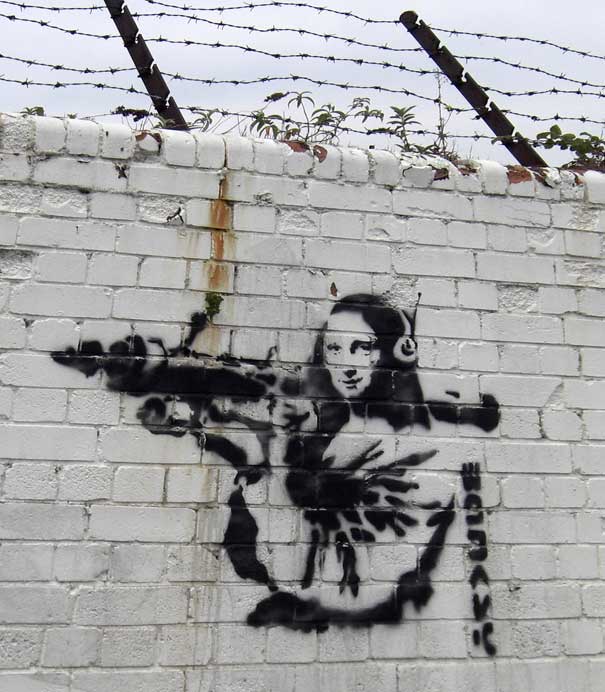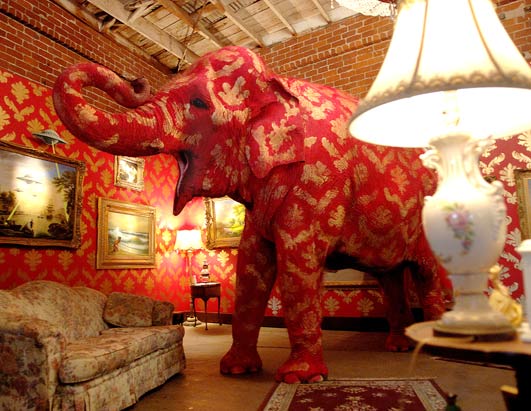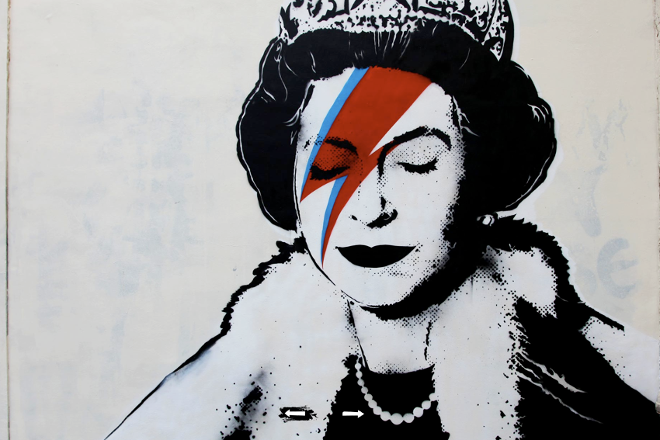Immediately recognizable. Baksy’s street art which you can see on the wall of the buildings in the biggest cities in the world and in the places were humans have barely set foot in. You can see his stencil graffiti street art in New York or in a small village in Norway or Iceland’s glacier lagoon. This artist, who keeps his identity a secret, became the world-famous graffiti symbol who turned the art world upside down.
Not much is known about his personality; however, some speculate that he was born in 1974 in Bristol, Great Britain. He began his career as a graffiti artist in early 1990’s in Bristol’s graffiti gang DryBreadZ Crew. At first, his work was dominantly freehand and he use stencils only occasionally. In the late ’90s, he started using stencils predominantly. His graffiti became more widely recognized around Bristol and in London, as his signature style developed.
Banksy’s work most often provokes the observer politically, so there is no surprise that he is usually assumed to be a political activist. His graffiti satirically criticizes war, capitalism, consumerism, hypocrisy and greed of the politicians. The most common images Banksy uses are rats, monkeys, policemen, soldiers, the Royal family members, and children. The dominating values that his works are promoting are freedom and equality, therefore, Banksy is thought to belong to the left side of the political ideologies. As Banksy has famously said: “We can’t do anything to change the world until capitalism crumbles. In the meantime we should all go shopping to console ourselves.“
© banksy.co.uk
Banksy expressed his disgust in military conflicts quite originally and fearlessly in 2005 when he traveled to West Bank and painted not one but nine graffiti works on the wall that Israel built around occupied territory of Palestine. This brave act attracted undivided media attention and Banksy became famous in a second. Banksy expressed his feelings about the situation in West Bank in this statement: „The Israeli government is building a wall surrounding the occupied Palestinian territories. It stands three times the height of the Berlin Wall and will eventually run for over 700km – the distance from London to Zurich. The wall is illegal under international law and essentially turns Palestine into the world’s largest open prison.” And made a joke a second later: “It also makes it the ultimate activity holiday destination for graffiti writers.” Banksy also mentioned that an old Palestinian man told him that Banksy’s graffiti made the wall prettier but said: “We don’t want it to be beautiful, we hate this wall. Go home.” In 2003 anti-war demonstration in London Banksy distributed signs that read “I Don’t Believe In Anything. I’m Just Here for the Violence.”
© banksy.co.uk
Banksy is also known for creation of his own versions of the famous paintings. In the Monet’s famous series of water lilies paintings Banksy included drifting trash and debris in the background. He also painted revisionist oil paintings of Mona Lisa with a yellow smiley face and disguised in a fake beard and a trenchcoat, installed them, respectively, in the Louvre and the Tate. In the Natural History Museum Banksy put a taxidermy rat equipped with a miniature can of spray paint and called it Banksus militus vandalus.
In addition to his stencil graffiti Banksy is famous for his installation artwork. One of the most popular of these installations featured a live elephant which Banksy painted with a Victorian wallpaper pattern. This artwork created controversy among animal rights activists.
© banksy.co.uk
Banksy’s original work and fame changed the dominated view in the art world that graffiti is nothing but vandalism. The rising prices of graffiti as street art are thought to be the result of the “the Banksy effect.” Some of the Banksy’s works are auctioned even though the author remains extremely critical about this. Banksy does not want his graffiti to become a commodity. After someone bought one of his paintings for 575 000 dollars, Banksy put a picture of the new painting on his website in which he painted the words: “I can’t believe you morons actually buy this shit.” Recently in the auction in London Banksy’s famous work called Slave Labour depicting a small boy sewing British flags was sold for 750 000 pounds. This piece of the street art was removed from the wall in Poundland in Wood Green and put for auction without any consent from Banksy. Apparently Banksy was unpleasantly surprised by this because the small rat which is holding a sign that reads “Why?’ was drawn on the same wall next to the place where the original Slave Labour used to be. Interest in Banksy’s stencil graffiti escalated with the release of the 2010 documentary Exit Through the Gift Shop that analyzes the relation between commercial and street art. This film was nominated for an Oscar in the category of the Best Documentary.
© banksy.co.uk
In one of the interviews Banksy observed: “I’ve learnt from experience that a painting isn’t finished when you put down your brush — that’s when it starts. The public reaction is what supplies meaning and value. Art comes alive in the arguments you have about it.” However, he appears to be very sarcastic about the art world in general: “The art world is the biggest joke going. It’s a rest home for the overprivileged, the pretentious, and the weak.”
© banksy.co.uk
Despite the intensive speculations Banksy’s identity is still unknown. The two names most often suggested are Robert Banks and Robin Gunningham. A couple of months ago some arrests for vandalism were made in Great Britains suspecting that one the arrested ones is Banksy. However, as the police later confirmed Banksy was not among the arrested men. To keep his identity a secret is crucial for Banksy not only because it is an integral part of the „Banksy phenomenon“ but also because in many countries graffti art is still considered to be a criminal activity.
banksy.co.uk
Some say that Banksy’s street art is mediocre and in general – overestimated. Other argue that Banksy’s fight against capitalism seems hypocritical when his own art is becoming highly demanded commodity. However, we must admit that Banksy is interesting and daring street artist. Some people may criticize him but only because he makes us see the most painful political and social problems existing in the society even if we pretend not to see them.










